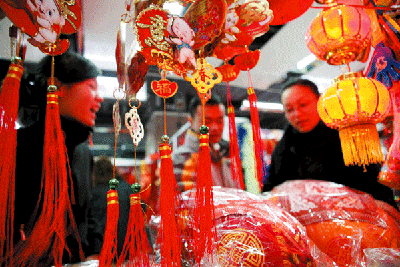
The Chinese calendar is a combined solar/lunar calendar in that it strives to have its years coincide with the tropical year and its months coincide with the synodic months. It is not surprising that a few similarities exist between the Chinese and the Hebrew calendar: An ordinary year has 12 months, a leap year has 13 months. An ordinary year has 353, 354, or 355 days, a leap year has 383, 384, or 385 days.
When determining what a Chinese year looks like, one must make a number of astronomical calculations: First, determine the dates for the new moons. Here, a new moon is the completely "black" moon (that is, when the moon is in conjunction with the sun), not the first visible crescent used in the Islamic and Hebrew calendars. The date of a new moon is the first day of a new month. Secondly, determine the dates when the sun's longitude is a multiple of 30 degrees. (The sun's longitude is 0 at Vernal Equinox, 90 at Summer Solstice, 180 at Autumnal Equinox, and 270 at Winter Solstice.) These dates are called the Principal Terms and are used to determine the number of each month:
����Principal Term 1 occurs when the sun's longitude is 330 degrees.
����Principal Term 2 occurs when the sun's longitude is 0 degrees.
����Principal Term 3 occurs when the sun's longitude is 30 degrees, etc.
����Principal Term 11 occurs when the sun's longitude is 270 degrees.
����Principal Term 12 occurs when the sun's longitude is 300 degrees.
Each month carries the number of the Principal Term that occurs in that month. In rare cases, a month may contain two Principal Terms; in this case the months numbers may have to be shifted. Principal Term 11 (Winter Solstice) must always fall in the 11th month. All the astronomical calculations are carried out for the meridian 120 degrees east of Greenwich. This roughly corresponds to the east coast of China.
|

